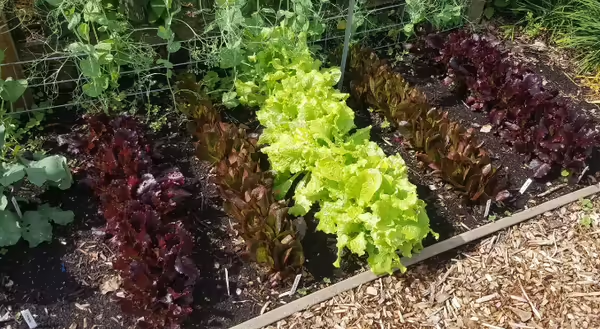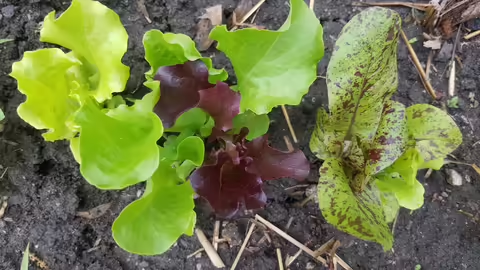
The spring vegetable gardening season is nearly upon us. If you haven’t started making preparations, now is the time to “spring” into action before you miss the opportunity to capitalize on unique weather conditions early in the season. Cool season vegetables, such as lettuce, kale, spinach, onion, beets and potato are crops that thrive in the colder temperatures of the late spring. By the time summer heat sets in, these plants loose vigor and palatability making early harvest essential. Since many of these crops require 30 days or more to mature, plantings must be established early in the growing season to ensure suitable growing conditions will persist until harvest.
Growing lettuce
Leaf lettuce has been a favorite cool season crop over the years in our vegetable garden. It is easily established from seed and yields an amazing amount of produce in a relatively small space.
Lettuce thrives when daytime temperatures are between 60 and 70°F, which primarily occurs in April and May here in central Illinois with sporadic days earlier and later in the season. Many gardeners start lettuce very early to gain more of the cool season for production. However, some form of cold protection, such as a cold frame or plastic covering from a low tunnel structure, is typically required to gain warmth from the sun and avoid frost or cold damage.
When to plant
I usually plan to start lettuce from seed in late March without any cold protection. This allows enough time for multiple harvests before the heat of June kicks in. As temperatures warm, growth is stunted, leaves may become bitter tasting and lettuce plants start to form seed stalks, signaling the end of spring lettuce production.
There are a variety of lettuces that do well in the home garden, from leaf lettuce and romaine to butterhead or crisphead varieties. Over the years, I have fallen back to mostly planting leaf lettuce. I like its versatility, since leaf lettuce matures quickly, can be harvested at a variety of sizes and lends well to succession planting. I’ve found the head forming varieties to be more work, as they tend to require a longer period of growth, more space and additional care to produce a nice head at harvest.
How to plant
Leaf lettuce can be seeded in rows or broadcast over the soil surface to form a stand or patch of lettuce. Seedlings should be thinned to about 4 inches apart once they emerge and start to compete. Most varieties recommend about 10 seeds per foot when planted in rows and I have loosely tried to follow that spacing but typically seeded a little heavier with plans to thin later.
I really like succession seeding, where a small patch is planted each week over several weeks or a month. Since the plantings are spaced out by a week, harvests are spread out as well creating a steady supply of produce, as opposed to one large harvest from the same space.
Weeds and other maintenance
Weed pressure is perhaps the biggest challenge in lettuce production. Since lettuce plants are very shallow rooted, any kind of cultivation for weed control must be done with care so that lettuce roots are not impacted. For me, hand pulling weeds has been the method of choice. It is sometimes time consuming and takes continual follow-up, but I’ve found the practice to be somewhat therapeutic in that it gets me out in the garden, it doesn’t take too much mental energy or planning and the end result is an immaculate-looking patch of lettuce.
Light mulching can help to curb the weed pressure and preserve soil moisture. I’ve typically applied a light layer of straw mulch at planting time and added some mulch after the first weeding. As the season progresses and heat begins to impact lettuce, mulch can prolong the production of quality lettuce by moderating soil temperature and the microenvironment around individual plants.
Home lettuce production can be a great way to provide your own supply of fresh lettuce, grown in your own space. This versatile crop is easily planted in containers or the smallest of garden spaces as well as larger traditional garden beds. Now is the time to grab some seeds or starts and get gardening, the heat of summer will be upon us in no time.
